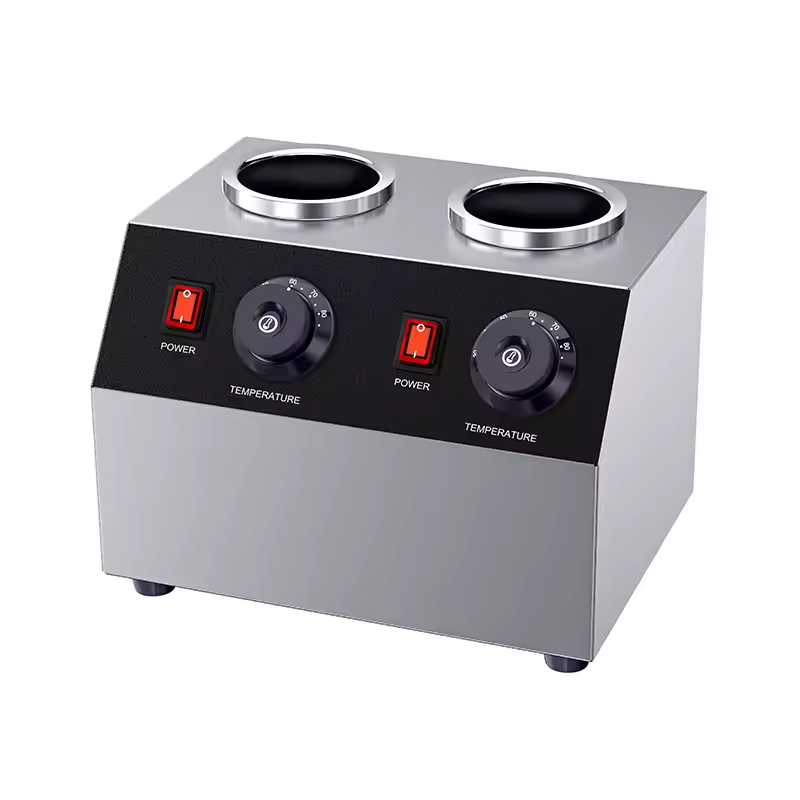Why Temperature Matters
Chocolate is highly sensitive to temperature. Properly tempered chocolate has a glossy finish, firm snap, and smooth mouthfeel. Deviating from ideal temperature ranges leads to bloom, graininess, and separation.
Key Temperature Ranges
- Dark chocolate: melt 113–122°F (45–50°C), cool to 82–84°F (28–29°C), reheat to 88–90°F (31–32°C)
- Milk chocolate: melt 104–113°F (40–45°C), cool to 80–81°F (27–27.5°C), reheat to 84–86°F (29–30°C)
- White chocolate: melt 100–110°F (38–43°C), cool to 79–81°F (26–27°C), reheat to 82–84°F (28–29°C)
Professional Techniques
Use a thermostatically controlled warmer to maintain finishing temperatures during service. Avoid direct high heat; always use gentle, even heating and monitor with a calibrated thermometer.
Best Practices
- Preheat vessels and tools to reduce temperature shock
- Stir regularly to eliminate hot spots
- Maintain separate zones for dark and milk/white chocolate
- Use a warmer with fine-grained controls and stable hold temps
Troubleshooting
If chocolate thickens or loses sheen, lower the working temperature slightly and add tempered seed. If it becomes too fluid, allow it to cool while stirring, then hold at finishing temperature.
